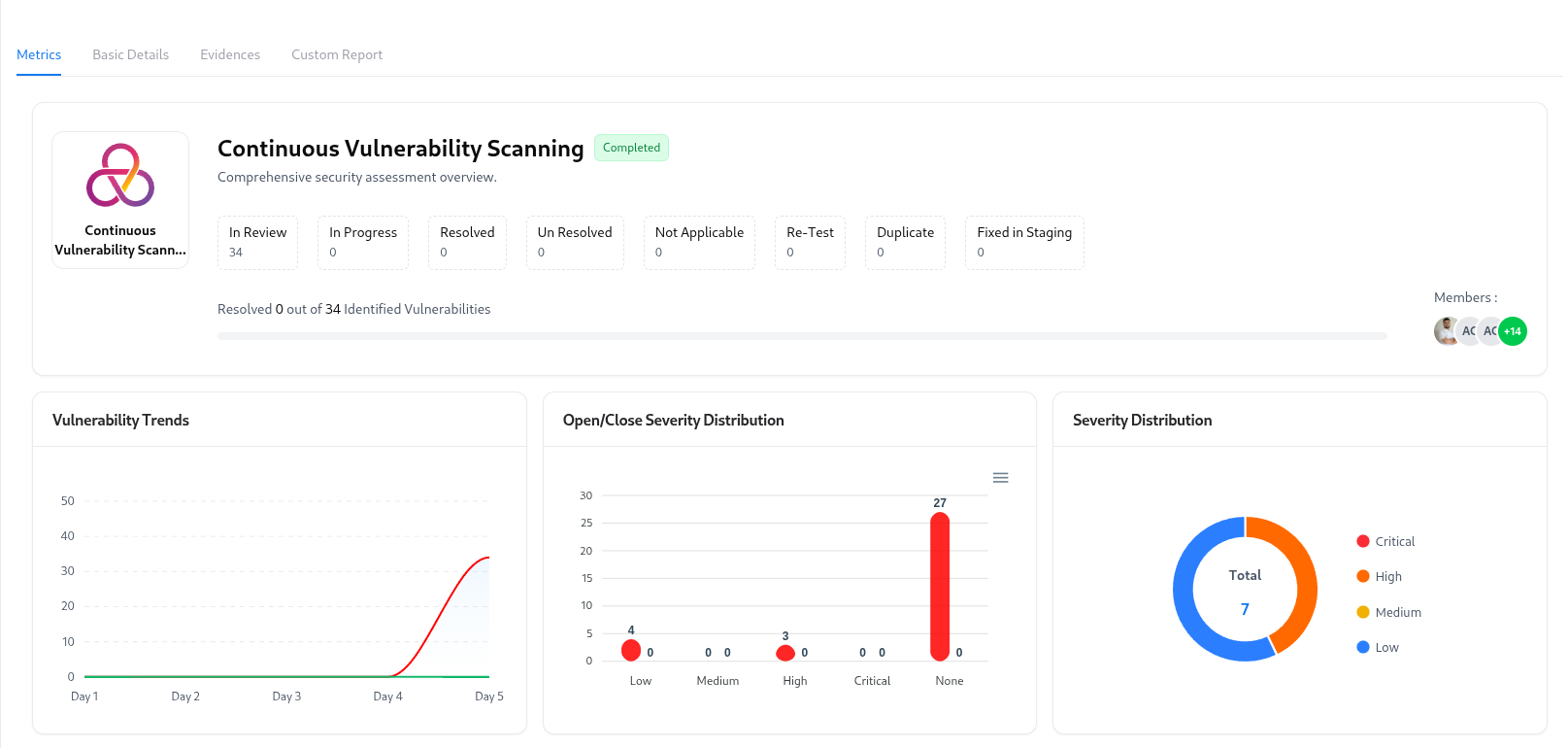
Overview
Contextual Prioritization helps teams focus on the vulnerabilities that truly matter.Each finding includes enriched context — severity, asset criticality, environment, exploitability signals, and operational metadata — allowing your teams to allocate effort where it delivers the highest risk reduction.
Key Capabilities
Severity Badges
Clearly labeled CVSS-based severity levels highlight the urgency of each vulnerability for faster triage.
Asset Importance Awareness
Prioritize findings based on the criticality, role, and business value of impacted assets.
Environment Context
Distinguish vulnerabilities across production, staging, testing, or development environments for smarter action.
State & Lifecycle Tracking
Track each vulnerability’s current lifecycle state — open, in-progress, accepted risk, or resolved.
Metadata Enrichment
Every finding contains technical details, timestamps, affected components, and exploit references for accurate decision-making.
Smart Prioritization
Combine severity, asset context, exploitability, and environment signals to surface what needs attention first.
Value
Reduce noise and eliminate guesswork.Contextual prioritization ensures your security and engineering teams focus on high-impact issues rather than drowning in low-risk noise — improving remediation speed and overall security posture.
Next Steps
Explore Live Demo Now
See how contextual prioritization simplifies triage for security teams.